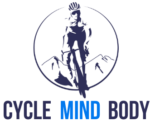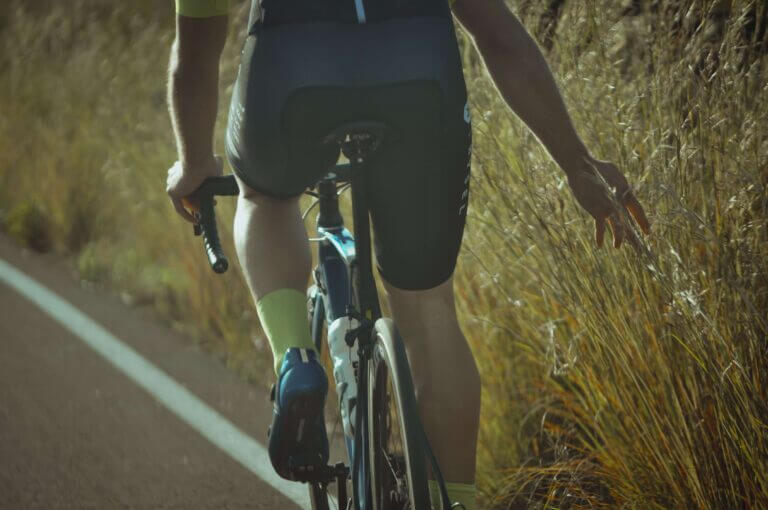Table of Contents
Ah, the thrill of cycling! The wind in your hair, the sense of freedom, and the joy of exploring new terrains—it’s a sport that fills your heart with excitement and your soul with adventure. But, if there’s one thing that can quickly dampen your cycling spirits, it’s dealing with a sore butt. Yes, that dreaded discomfort that can turn even the most scenic rides into a struggle.
But fret not, fellow cyclists! In this ultimate guide, we’re diving headfirst into the world of pain-free cycling. We’ll unravel the mysteries behind those pesky saddle sores, explore the magic of the perfect bike fit and top-notch cycling shorts, and discover the art of building butt resilience through training.
Plus, we’ll delve into the secrets of in-ride comfort, post-ride recovery, and self-care practices that’ll have you pedaling with a smile on your face. So, let’s strap on those helmets, adjust those saddles, and get ready to hit the road without a single worry about a sore behind.
From newbies to seasoned riders, we’ve got all the tips and tricks you need to make every ride a comfortable and enjoyable journey. Because, after all, cycling isn’t just a sport—it’s a way of life, and we’re here to help you embrace it to the fullest!
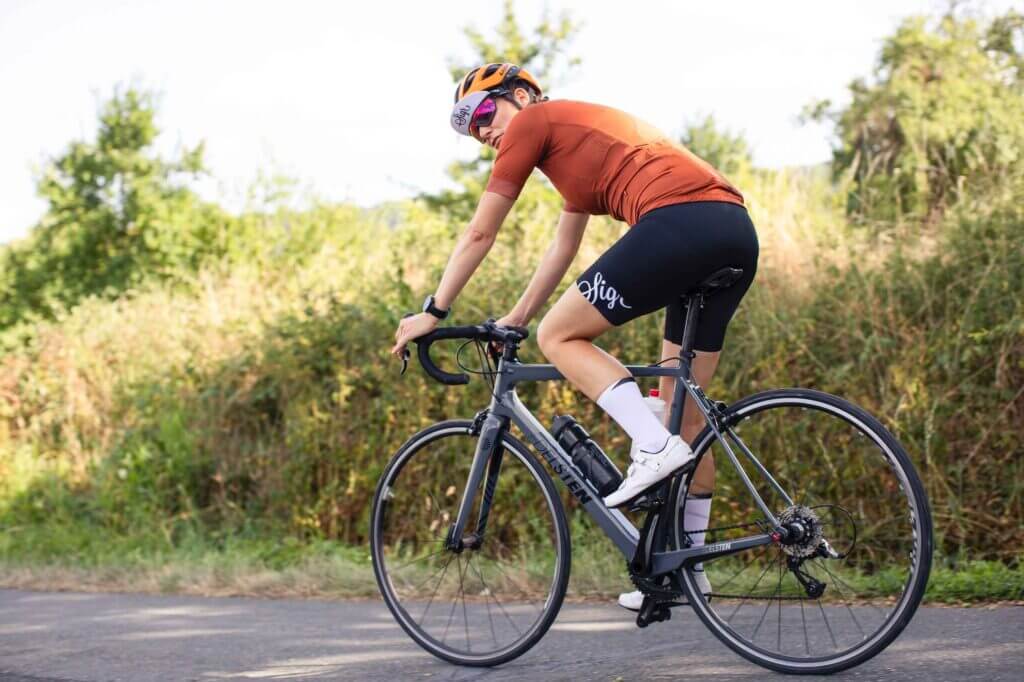
Understanding the Causes of Soreness
Let’s dive deeper into the factors that contribute to a sore butt while cycling and how they can be mitigated for a more comfortable riding experience.
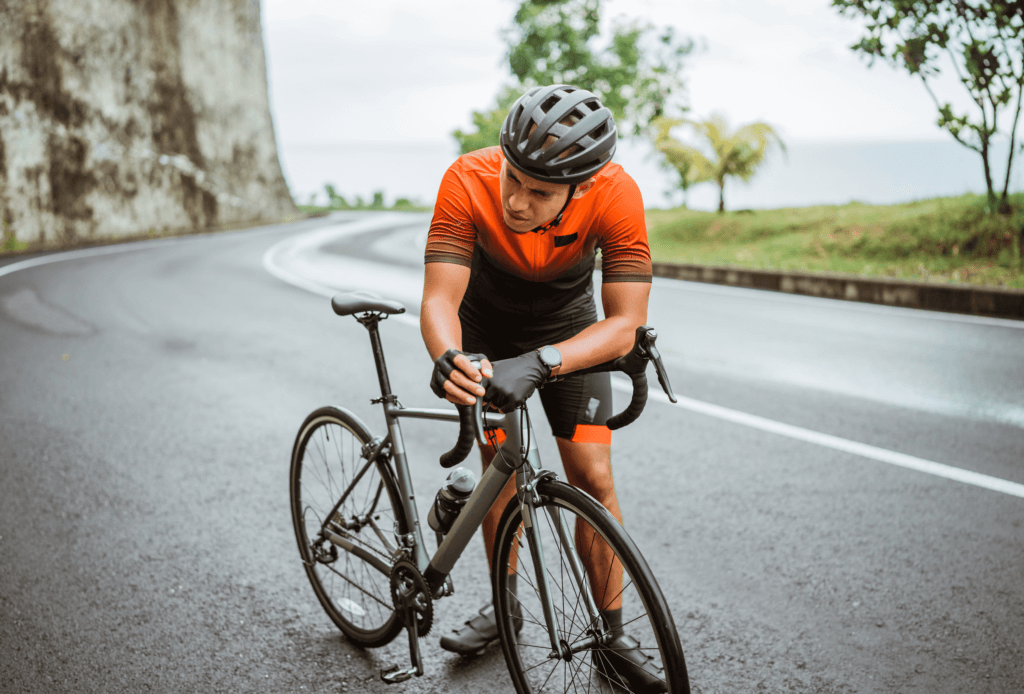
Saddle Sores: The Culprits Behind the Pain
Saddle sores are the bane of many cyclists’ existence. These painful and often tender areas on the skin are caused by a combination of friction and pressure during cycling.
As you pedal, your body comes into continuous contact with the saddle, creating a rubbing motion that can lead to skin irritation and chafing. The repetitive pressure on sensitive body parts, particularly the sit bones, perineum, and groin area, can cause skin breakdown and discomfort.
Ill-Fitted Bikes: When Size Matters
An ill-fitted bike can exacerbate the problem of soreness. When your bike doesn’t fit your body properly, it places undue stress on your buttocks and other contact points. For instance, if the saddle is too high or too low, it can lead to improper weight distribution and increased pressure on your sit bones.
Similarly, an improperly tilted saddle can cause pelvic tilt and discomfort. Additionally, handlebar and pedal positions that are not adjusted to your body measurements can affect your riding posture, leading to increased pressure on your rear end.
The Impact of Low-Quality Cycling Shorts
Cycling shorts play a crucial role in providing comfort and protection during rides. However, low-quality shorts with insufficient padding and abrasive fabrics can add to your woes. The lack of proper padding, known as the chamois, can fail to cushion your sit bones adequately.
As a result, the friction between your skin and the saddle is heightened, leading to chafing and irritation. Moreover, abrasive fabrics can exacerbate the issue, causing more discomfort during longer rides.
Pre-Ride Preparations for Comfort
To ensure a smooth and comfortable ride, proper pre-ride preparations are essential. Let’s explore the steps you can take to prevent soreness and discomfort before you even hit the road.
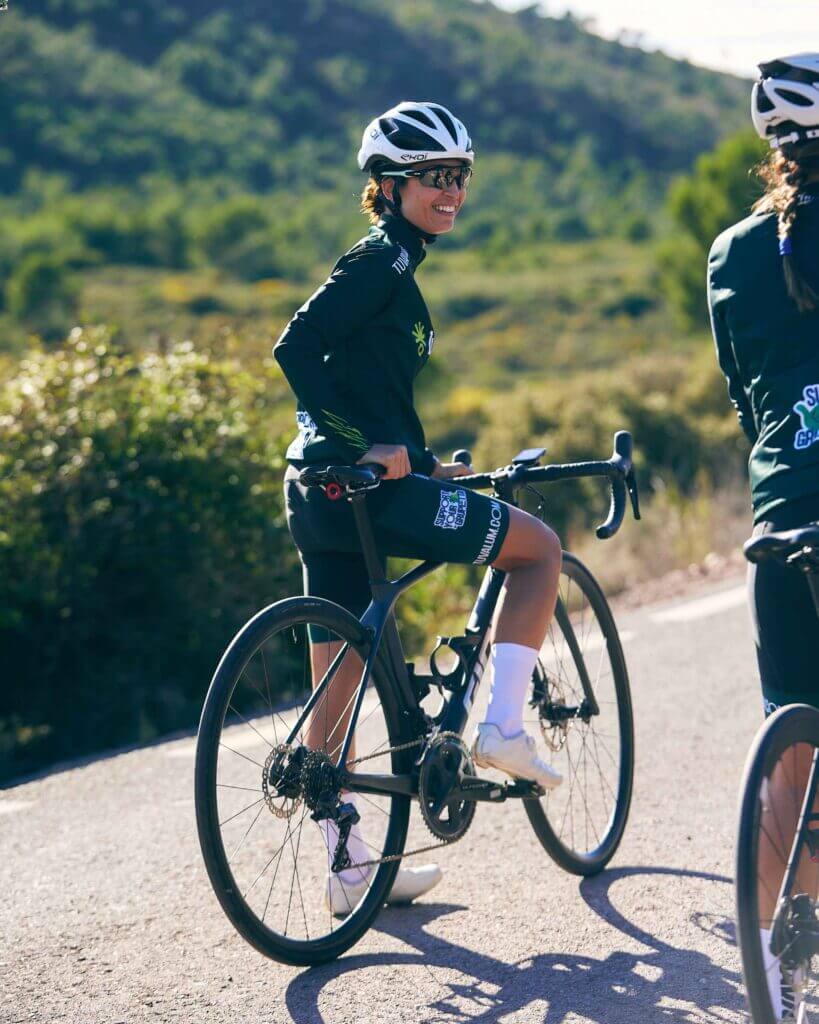
Chamois Cream: The Butt’s Best Friend
Chamois cream, also known as cycling cream or saddle cream, is a cyclist’s secret weapon for preventing chafing and saddle sores. This specialized cream is designed to provide an additional layer of lubrication and protection between your skin and the chamois padding of your cycling shorts.
Before heading out for your ride, apply a small amount of chamois cream directly to the chamois padding of your cycling shorts. The cream’s lubricating properties reduce friction between your skin and the chamois, minimizing the risk of chafing and irritation during long rides. It also helps to keep your skin dry by wicking away moisture, further preventing discomfort.
Choosing the Right Saddle: A Seat for Every Behind
Finding the right saddle is an individual process that requires careful consideration of your anatomy and riding preferences. The ideal saddle should match the width of your sit bones, provide adequate padding and support, and suit your riding style.
There are various saddle shapes and designs available, from narrow to wide, with cutouts and different materials. Trying out different saddles and seeking expert advice during a bike fitting can help you find the perfect match for your behind.
Adjusting Saddle Height and Tilt: Achieving the Perfect Position
Achieving the correct saddle height and tilt is crucial for optimal comfort and performance. A saddle that is too high can lead to overextension of your legs and increased pressure on your sit bones.
On the other hand, a saddle that is too low can cause improper pedaling mechanics and discomfort. Similarly, adjusting the saddle tilt can impact your riding posture and pressure distribution.
A neutral tilt that doesn’t put excessive strain on your pelvis and perineum is ideal for most riders. Professional bike fitting services can help you dial in the perfect saddle height and tilt for your unique body mechanics.
Invest in High-Quality Cycling Shorts: Your Butt’s Best Friend
Cycling shorts with a well-designed chamois are a cyclist’s best friend. The chamois acts as a cushion between your sit bones and the saddle, reducing friction and pressure.
Look for cycling shorts with high-density foam or gel padding that conforms to your anatomy and provides excellent support. Moisture-wicking and breathable fabrics are also essential for keeping your skin dry and preventing chafing during rides.
Investing in high-quality cycling shorts may be one of the most significant steps you can take to prevent a sore butt and enhance your overall cycling experience.
Building Butt Resilience through Training
Building butt resilience is essential for long-lasting comfort during cycling. By gradually conditioning your body and incorporating specific exercises, you can strengthen the muscles supporting your buttocks, reduce strain on your sit bones, and prevent discomfort.
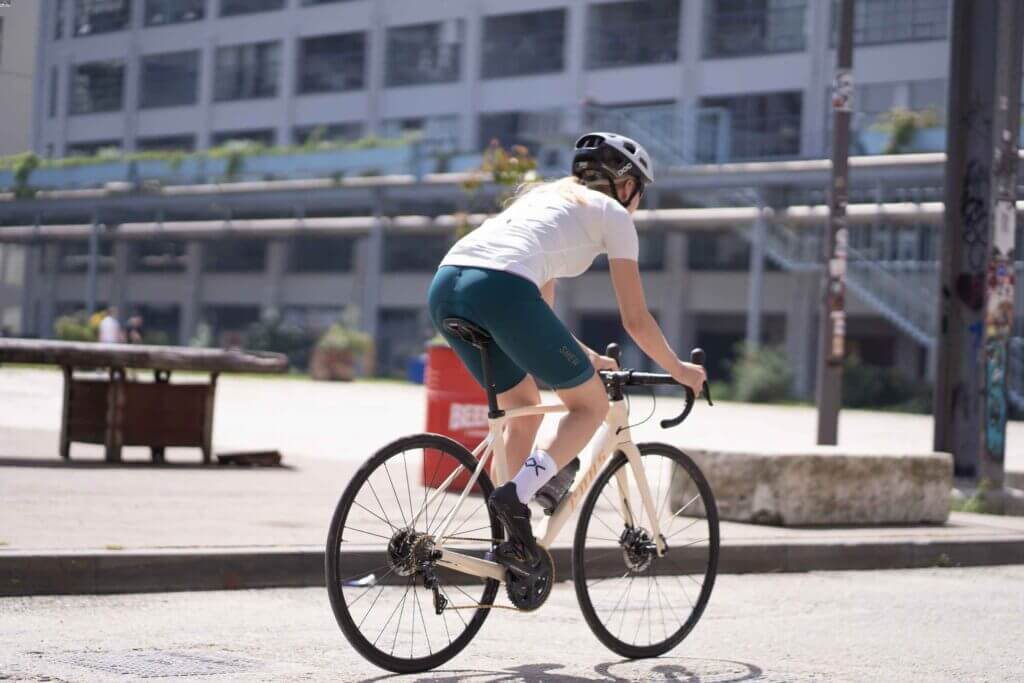
Gradual Progression: The Key to Butt Comfort
When it comes to cycling training, slow and steady wins the race. Avoid sudden and drastic increases in mileage, especially if you’re new to cycling or returning after a break.
Gradually increase your ride duration and intensity to give your body time to adapt to the demands of cycling. This approach allows your sit bones to become accustomed to the pressure they experience during rides, reducing the risk of soreness and potential injuries.
Targeted Strength Exercises: Empowering Your Butt Muscles
Incorporate targeted strength exercises into your training routine to support and strengthen the muscles around your buttocks. Focus on exercises that engage the glutes, hamstrings, and lower back.
Squats, lunges, and deadlifts are excellent compound exercises that activate multiple muscle groups simultaneously, providing a well-rounded workout for your lower body.
Additionally, exercises like bridges and glute bridges specifically target the glute muscles, helping to improve stability and reduce pressure on your sit bones while cycling.
Tips for In-Ride Comfort
Staying comfortable in the saddle during your rides is essential for a pleasurable cycling experience. These in-ride comfort tips will help you maintain a happy rear end throughout your journey.
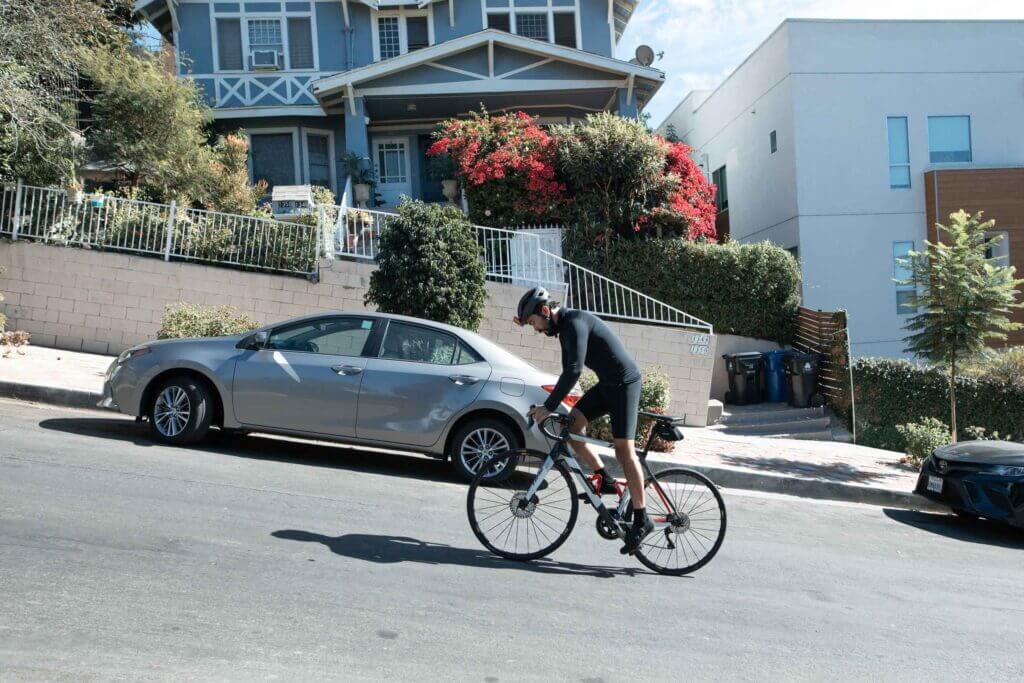
Consistent and Comfortable Pace: Avoiding Unnecessary Pressure
Maintaining a consistent pace that suits your fitness level and terrain can significantly reduce pressure on your seat. Avoid sudden bursts of speed or excessive pushing on inclines, as these can strain your sit bones and contribute to soreness.
Instead, find a comfortable and sustainable pace that allows you to pedal smoothly and efficiently. Using a cadence sensor or counting your pedal strokes per minute can help you find the right rhythm that minimizes pressure on your rear end.
Standing and Sitting Intervals: Promoting Circulation and Comfort
Introducing standing and sitting intervals during your rides can have multiple benefits for your butt and overall comfort. Standing up every 10-15 minutes for a short period helps to increase blood flow to your lower body, reducing the risk of numbness and discomfort.
Additionally, sitting intervals provide a temporary relief for your legs while allowing your butt to rest on different parts of the saddle, preventing prolonged pressure on one specific area.
Shifting Weight: Taking the Load Off
As you ride, don’t be afraid to shift your weight on the saddle and utilize different riding positions. Lean slightly forward on climbs to distribute the pressure between your hands and feet, and sit back slightly on descents to engage your glutes and relieve pressure on your perineum.
Changing your hand positions on the handlebars can also shift your weight distribution and provide temporary relief for your rear end. By being mindful of your body position and weight distribution, you can effectively alleviate pressure on your buttocks and stay comfortable throughout your ride.
With these training and in-ride comfort tips, you can strengthen your buttocks, minimize pressure on your sit bones, and enjoy a more comfortable cycling experience. Remember, building butt resilience is a gradual process, so be patient and consistent with your training and riding practices.
Post-Ride Recovery and Self-Care
Post-ride recovery and self-care are crucial for ensuring that your body recovers well and remains in top shape for your next cycling adventure. Taking the time to engage in these practices will not only prevent soreness but also promote overall well-being.
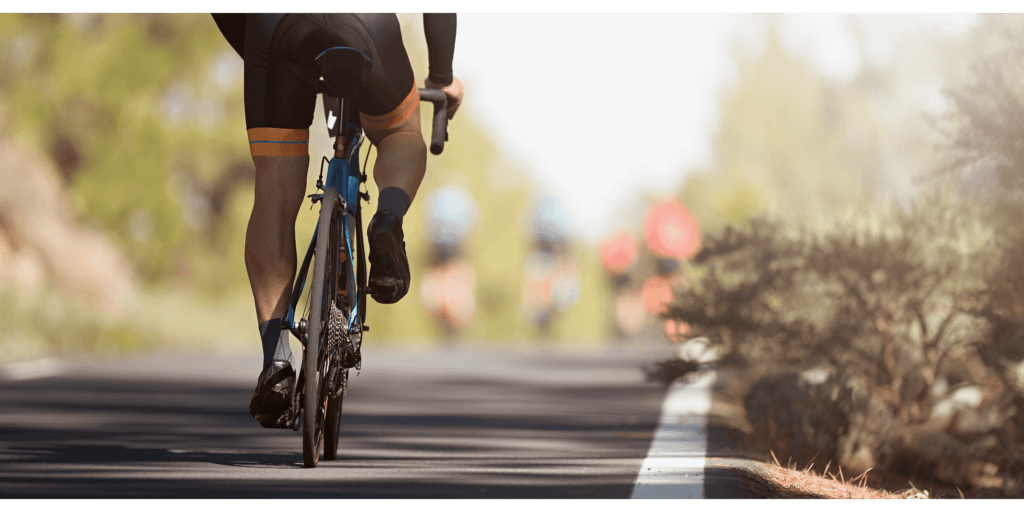
Gentle Stretching: Soothing Your Lower Body
After a long ride, your muscles may feel tight and tense, especially in your lower body, including your buttocks. Engaging in gentle stretching exercises can do wonders in easing tension and reducing muscle stiffness.
Target your glutes, hamstrings, and hip flexors with stretches like pigeon pose, hamstring stretches, and hip flexor stretches. Hold each stretch for 20-30 seconds and repeat as needed.
Stretching promotes blood flow to the area, flushes out metabolic waste, and accelerates the healing process, leaving you feeling more relaxed and ready for your next ride.
Ice or Heat Therapy: Relieving Inflammation and Promoting Healing
Applying ice or heat therapy to the affected areas can provide relief from inflammation and support the healing process. Immediately after a ride, applying an ice pack wrapped in a cloth to your buttocks for 15-20 minutes can help reduce inflammation and numb the area, providing temporary pain relief.
Heat therapy, on the other hand, can be used a day or two after the ride to increase blood flow and promote healing. A warm compress or a warm bath can soothe your muscles and alleviate any lingering discomfort. Remember to always use a cloth or towel to protect your skin from direct contact with ice or heat sources.
Proper Hygiene: A Must for a Healthy Behind
Maintaining proper hygiene is essential for preventing infections and maintaining healthy skin, especially in areas prone to chafing and irritation during cycling. After each ride, make it a habit to clean your cycling shorts thoroughly to remove sweat, dirt, and bacteria.
Always follow the manufacturer’s guidelines for washing your shorts to preserve their integrity and padding. Additionally, regularly inspect your bike and equipment for any signs of wear and tear, addressing any issues promptly to ensure optimal performance and comfort.
Choosing the Right Bike and Equipment
Enhancing saddle comfort can make a world of difference in preventing a sore butt and ensuring a delightful ride. Thoughtful additions to your bike and equipment can significantly improve your cycling experience.

Gel and Foam Padding Options: Extra Comfort and Support
If you’re looking to enhance your saddle’s comfort, consider investing in gel or foam padding options. Gel pads, which can be placed directly on your saddle or inside your cycling shorts, provide extra cushioning for your sit bones, reducing pressure and friction.
Similarly, foam pads with varying densities conform to your body shape and offer excellent support. Experiment with different padding options to find the one that suits your anatomy and riding style best.
Suspension Seat Post: Smoother Rides Ahead
If you are a mountain biker, cyclocross rider, or gravel enthusiast, a suspension seat post can be a game-changer for your cycling comfort. To absorb shocks and vibrations from rough terrains, consider upgrading to a suspension seat post.
This valuable addition effectively dampens the impact of bumps and irregularities on the road or trail, reducing stress on your buttocks and providing a smoother, more enjoyable ride. Suspension seat posts come in various designs, from coil-sprung to air-sprung, so you can choose one that matches your specific cycling needs and preferences.
Exploring Alternative Saddle Designs: Customized Comfort
Different riders have different anatomies, and finding the right saddle design can significantly impact your comfort during rides. While a saddle may work perfectly for some, others might find it uncomfortable or unsuitable for their unique body shape and riding style.
If you find that a particular saddle just doesn’t suit you, don’t be discouraged—there are plenty of alternative saddle designs to choose from. Explore options such as anatomical, split, or noseless saddles, each catering to specific needs and preferences.
Anatomical saddles, with their cutout or groove, relieve pressure on the perineum, while split saddles with a central channel reduce pressure on sensitive areas. Noseless saddles eliminate the front nose of the saddle, providing additional relief for the perineum and soft tissues.
By trying out different saddle designs, you can discover a perfect match that ensures a comfortable and enjoyable ride, allowing you to focus on the thrill of cycling without the distraction of discomfort.
The Role of Bike Fit in Preventing Soreness
A professional bike fitting is a game-changer when it comes to preventing soreness and ensuring an enjoyable and efficient cycling experience.
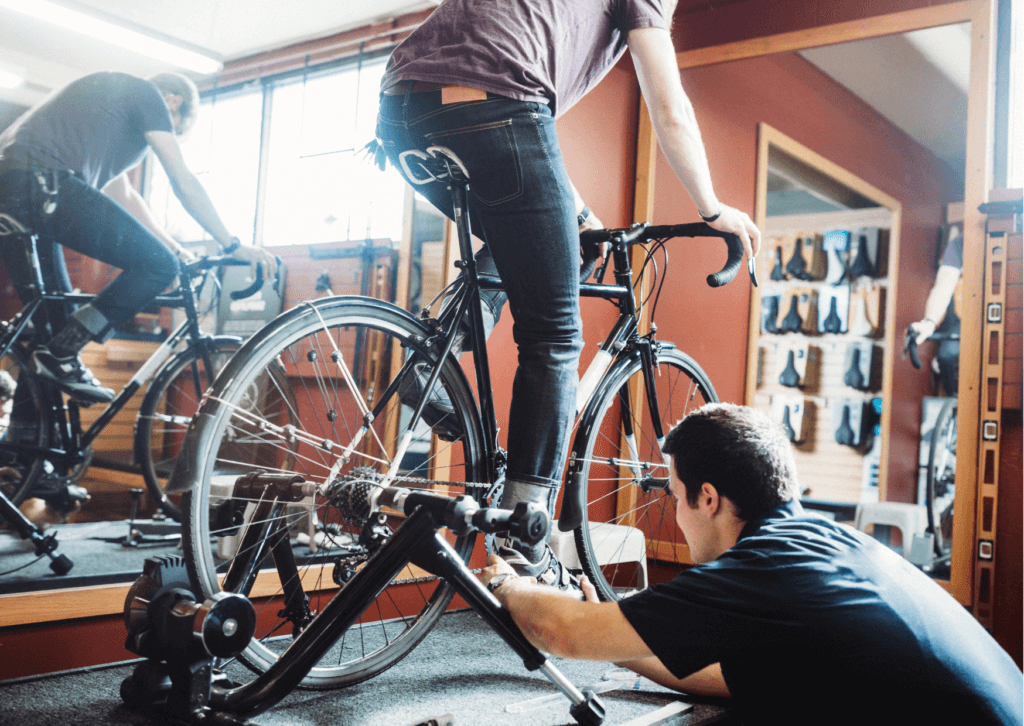
Assessing Your Riding Position: Personalized Adjustments
During a bike fit, an expert will assess your riding position, taking into account your body measurements, flexibility, and riding goals. Based on this assessment, personalized adjustments will be made to your bike setup, including saddle height, tilt, handlebar position, and pedal alignment.
These adjustments aim to achieve an optimal riding position that reduces pressure on your buttocks, promotes better power transfer, and improves overall comfort and efficiency.
Fine-Tuning Your Bike Setup: Ensuring Comfort and Efficiency
A professional bike fit allows for fine-tuning of your bike setup, making micro-adjustments to your saddle and handlebar positions. Fine-tuning ensures that your body is aligned properly, minimizing unnecessary strain on your buttocks and other contact points. Even small adjustments can make a significant difference in preventing soreness and enhancing your cycling experience.
Regular Bike Fit Check-Ups: Adapting to Changing Needs
Your body and riding preferences may change over time, so it’s essential to schedule regular bike fit check-ups. A bike fit that worked perfectly a few months ago may no longer be optimal for your current needs. Regular check-ups allow for adjustments to accommodate changes in your body or riding style, ensuring that you always ride in comfort and without pain.
FAQ About Cycling Comfort
How long does it take for saddle sores to heal?
The healing time for saddle sores can vary depending on their severity. Mild cases may take a few days to a week to heal with proper care and rest, while more severe cases could take several weeks. It’s essential to practice good hygiene, apply appropriate treatments, and avoid cycling until the sores have healed completely.
How do I know if my bike saddle fits properly?
A well-fitted saddle should support your sit bones comfortably and evenly. If you experience pain or discomfort during or after a ride, it may indicate an improper fit. Consider getting a professional bike fit to ensure the saddle’s width, shape, and position are appropriate for your body and riding style.
Should I wear underwear with my cycling shorts?
No, it’s best to avoid wearing regular underwear with cycling shorts. The padding, called chamois, is designed to provide moisture-wicking and friction-reducing properties, promoting a comfortable ride. Wearing underwear can create unnecessary friction and lead to chafing.
How often should I replace my cycling shorts?
The lifespan of cycling shorts can vary depending on their quality, frequency of use, and maintenance. As a general rule, consider replacing your cycling shorts every 1 to 2 years or when you notice signs of wear and tear, such as thinning padding or stretched fabric.
Is there a break-in period for a new saddle?
Yes, there is often a break-in period for a new saddle. It can take some time for your body to adjust to the new shape and padding. Start with shorter rides and gradually increase the distance as your body gets accustomed to the saddle. If discomfort persists after an extended break-in period, consider exploring alternative saddle designs.
